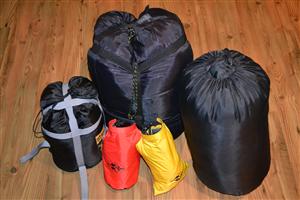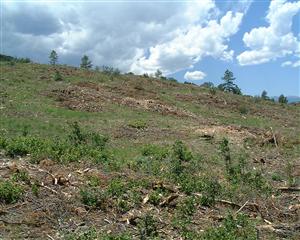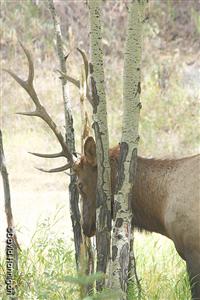Stuff Sacks
By Jim Bulger
 As hunters and outdoorsmen, we use stuff sacks to put various pieces of gear into to keep them in one place, dry in wet weather or so we can grab them and stuff them in a backpack quickly to hit the trail. I have received a variety of questions from hunters about elk season reflecting on some of their concerns and questions. So I entitled this lesson “Stuff Sacks” in an effort to provide the students with some answers to those questions.
As hunters and outdoorsmen, we use stuff sacks to put various pieces of gear into to keep them in one place, dry in wet weather or so we can grab them and stuff them in a backpack quickly to hit the trail. I have received a variety of questions from hunters about elk season reflecting on some of their concerns and questions. So I entitled this lesson “Stuff Sacks” in an effort to provide the students with some answers to those questions.
Back Up Handguns
A couple of students asked about using handguns in the field during hunting season. For example, Charles asks:
“A question has risen among a group of hunters regarding legal sidearms during the hunting season. We are quite sure that during the regular rifle seasons, a backup sidearm must meet the requirements of a legal hunting pistol or revolver....i.e.; it must meet the requirements of barrel length and energy @ 50 yards which are established in the state regulations. This would mean that a .355mag revolver could not be carried during the regular deer or elk season as a back-up sidearm. Is this correct?
The next question is....during the muzzleloading big game season....is a pistol or revolver sidearm legal at all? If so, does it have to meet the barrel length and energy requirements stated in the regs?
These questions assume that the legal rifle is carried for taking game as the primary weapon. The sidearm would be employed for dispatching an animal that has been downed with the rifle but requires another shot at close range. Hope to hear from you as a number of hunters have conflicting ideas regarding legal sidearms during the hunting season and rapid dispatch of a wounded animal is obviously important to us.”
I visited with Bob Thompson, our Assistant Chief of Law Enforcement, about the question. Bob’s guidance is pretty clear on the proper use of the handgun in the field. The paragraphs below summarize the issue. Bottom line is the first sentence. There is no “backup handgun” for hunting big game, the manner of take allowed is what is prescribed for the season and the license.
There is no such thing as a back-up sidearm during hunting season. You may carry a handgun with you during the act of hunting for personal protection but that is the purpose. There is no specific requirement for a legal handgun for personal protection (barrel length or caliber)except that it is in legal possession of the person under Colorado Law.
The use of a handgun to “put an animal down” would only fall into use during a rifle season and then the handgun must be in accordance with a legal method of take and meet the criteria listed in the Big Game Brochure, i.e. At a minimum, it must have a four-inch barrel, fire an expanding bullet of .24 caliber (6 mm) or larger and use a load that produces a minimum 550 ft. pounds of energy at 50 yards. Shoulder stocks or other attachments are prohibited.
The manner of take is the important part here. During archery season, no firearm can be used as a legal method of take. During muzzleloading season, the only legal method of take is a black powder firearm. You cannot use a handgun to shoot an animal to “finish it off” in either of these two seasons.
The chart in the big game brochure is pretty good and is pretty explanatory if you look at it. I think the issue in some folks' minds is that they shot the animal with the legal manner of take but then they think it is better to, more humane to, “finish off the animal with a handgun." The animal is not considered “taken into possession” until it is dead and the manner of take used to harvest the animal must be the same as allowed by the license.
Drought and Fire Conditions
 The national news has shown many of the wildfires we have experienced in Colorado. We have lost many acres of forest due to wildlife and the lives and homes lost touch each of us personally as our thoughts go out to those who have been affected by the fires.
The national news has shown many of the wildfires we have experienced in Colorado. We have lost many acres of forest due to wildlife and the lives and homes lost touch each of us personally as our thoughts go out to those who have been affected by the fires.
Several students have emailed or called with questions about the affects of the drought and wildfires on the wildlife of Colorado. So I visited with several of our wildlife biologists about the topics. As a side note here, if you get a chance to visit with one of our wildlife biologists here in Colorado, you will find them very helpful in helping you understand the habits and habitat needs of our big game animals. They are always willing to share information on the subject and you will appreciate their ability to combine science with good common sense when it comes to managing wildlife. Brian Dreher, our Senior Terrestrial Biologist in the Southeast Region, gathered up the thoughts from some of our biologists and sent them to me so I could pass along the discussion to the students. Think of this as if we had a classroom panel discussion on the subject.
Bob Davies, Wildlife Health and Disease Coordinator
In the past I have found elk will move to where there is green forage. Near springs that are found in timber or on the edge, aspen often hold elk as they are found in wetter sites. Small rivers or creeks that have green vegetation along them will also attract elk. One must think like an elk and ask where I would go to find the best food.
I once read a statement something like this: If you hunt elk you will probably hurt yourself and you will hurt yourself worse getting his carcass out of the woods.
Jeff Yost, Terrestrial Biologist, Steamboat Springs
My recommendations to hunters for this upcoming season are pretty basic. Look for areas that have water and green vegetation (if available). If it stays hot and dry during the season look for elk on north slopes in cool timber near water and good forage. Elk will likely be concentrated in areas with the best habitat unless hunter pressure or some other disturbance pushes them into heavy cover. We have elk in many parts of NW Colorado at elevations from 6,500 feet and up in summer and early fall, you don’t have to be at 9,500 feet or higher to find elk in archery and muzzle loader seasons. Look for elk in oak brush/aspen with dark timber nearby. However, many stock ponds and ephemeral streams at lower elevations that may have provided water in past years have already dried up this year and elk may be traveling some distance to the nearest water source in the evening and at night. Use limited water sources to your advantage by ambushing elk at water holes or going to and leaving water sources.
Andy Holland, State Big Game Coordinator
The problem is there is no simple answer to how drought will affect elk distribution because it varies by season. The best advice is for hunter to be flexible and prepared to change locations if elk are distributed differently than in previous years. Start with where you killed your elk in 2002 which was the last really dry year! Statewide success rates were relatively high in 2002: 16 percent during archery season, 19 percent during second rifle season, 25 percent during third rifle season and 25 percent during fourth rifle season. I will venture to make some generalizations on the coming season but bear in mind that the variables of hunting (weather, time of year, human pressure) are what makes this a unique experience.
September - Hunting will be better because of dry conditions. Elk will be concentrated where forage quality is highest in the upper ends of drainages and on cool north slopes. Since they will be concentrated AND vocal hunting will be good. My toughest years or archery hunting have been very wet years. Elk can be anywhere because there’s ample forage about everywhere. If elk have access to irrigated agricultural lands they will use them probably more than usual
October (in the absence of fall rains and good grass re-growth) - Hunting will be much tougher than usual. Elk will be in the coniferous timber on north slopes and will not come out because the forage is better in there with green grass in the understory. They WILL NOT come out in the open and get shot at to eat cured-out early season grasses.
November and December (with average snow) - it will depend on access to private land refuges. Hunting will be better than usual in areas without private refuges. If there’s snow they are really going to have to travel and work to get feed which will make them more vulnerable if they stay on public land. If they have access to refugees and they really move to them hunting will be tougher than usual.
Brian Dreher: Senior Terrestrial Biologist- SE Region
 I think we can all agree with our past experiences that wildfire will ultimately benefit both big game habitat and wildlife. Understandably, many folks are concerned about the future of their hunting spot if it was burned up by the recent fires. I think that many hunters will be surprised to find that deer and elk will start to re-colonize these areas fairly quickly after a fire. I think this can be attributed to a number of factors. First, I think that suitable grasses tend to regenerate quickly after a fire, if the general area has a rain event. This is because the black ground heats up quickly and also the loss of over-story vegetation makes the landscape more suitable for grasses to grow. The second thing to consider after a fire event is access. For safety reasons, the USFS often limits access to burned areas. This often time means closures to roads that provided lots of access into hunting areas. The limited access may help hunters that like to hunt more remote areas until the roads are re-opened. Like others have suggested, it is important to remain flexible, but I would not overlook a recently burned area, because many will, and may miss out. No elk hunter should overlook the power of optics. Finding a place to sit and glass large expanses of country will save your feet many miles.
I think we can all agree with our past experiences that wildfire will ultimately benefit both big game habitat and wildlife. Understandably, many folks are concerned about the future of their hunting spot if it was burned up by the recent fires. I think that many hunters will be surprised to find that deer and elk will start to re-colonize these areas fairly quickly after a fire. I think this can be attributed to a number of factors. First, I think that suitable grasses tend to regenerate quickly after a fire, if the general area has a rain event. This is because the black ground heats up quickly and also the loss of over-story vegetation makes the landscape more suitable for grasses to grow. The second thing to consider after a fire event is access. For safety reasons, the USFS often limits access to burned areas. This often time means closures to roads that provided lots of access into hunting areas. The limited access may help hunters that like to hunt more remote areas until the roads are re-opened. Like others have suggested, it is important to remain flexible, but I would not overlook a recently burned area, because many will, and may miss out. No elk hunter should overlook the power of optics. Finding a place to sit and glass large expanses of country will save your feet many miles.
Thanks for the conversation and insight guys, I am sure the students will now have some great research to do before their season; looking at topo maps, aerial photos and putting boots on the ground to find those areas of green vegetation, water, and good bedding areas.
Hunting High Pressure Elk
Several students are trying to develop a variety of strategies for the coming hunting season. The summer heat allows us to take a respite break and read some articles, think about the hunt, use our visualization techniques discussed in the Wapiti Workout lesson. Frequently they shoot me a note about techniques for hunting pressured elk. Dan emailed me and asked this question about hunting high pressured elk.
Hi Jim,
I have enjoyed Elk Hunting University and I want to thank you for your time in putting it together. I have been elk hunting for the past three seasons in GMUs 24 and 12. The area we hunt receives a lot of pressure. My typical day involved waking up a couple of hours before daylight, preparing for the days hunt and hiking a mile or more to a pre-determined location. I typically stay put for a couple of hours and then slowly still hunt to another location. Could you elaborate on hunting in high pressure areas with specific tactics? Should I be patient and stay put in a likely elk route for a longer period of time with the idea that other hunters will continually move elk around? Should I incorporate more still hunting in the dark timber with the idea that the elk with hole up in the darkest and steepest terrain and not move during the day? Any other tips for hunting high-pressure elk?
As Andy Holland accurately pointed out when we visited on this topic:
“Work harder than the average hunter by getting away from the roads. Even an honest half mile makes a big difference. On this one, let’s not reinvent the wheel. There are literally thousands of magazine articles and books written on the topic. Many of these are written by guys that spend way more days a year hunting elk than we do, unfortunately. That said, nothing substitutes for boots on the ground….days afield, and isn’t that the beauty of it?”
 And Andy is right, there are literally hundreds of good articles out there about hunting pressured elk, and I may have read at least 100 of them over the past year as I looked for tips for myself and the students of EHU. I could answer Dan by saying, yes, do them all, be patient, glass more, look in the hard to find places, use the old Star Trek mantra: "Go where no man has gone before”.
And Andy is right, there are literally hundreds of good articles out there about hunting pressured elk, and I may have read at least 100 of them over the past year as I looked for tips for myself and the students of EHU. I could answer Dan by saying, yes, do them all, be patient, glass more, look in the hard to find places, use the old Star Trek mantra: "Go where no man has gone before”.
My recommendation to Dan and others who have asked about hunting pressured elk, is to do some research on the web and read what others have written on this topic as there are plenty of opinions. I like to read Eastman’s Hunting Journal as I enjoy the articles and the concepts they promote in the magazine. Chris Roe of Roe Hunting Resources contributes to the University from time to time and gives some great thoughts on elk hunting on his website. You could check out Dave Rowell’s thoughts on his Elk Hunting Tips website, he talks about some good ideas on a variety of elk hunting topics. These are just a few of the ones I read lately and as I said, I could spend a long time listing others that deal with some thoughts on hunting pressure.
Sunset
I think the stuff sacks are full for this lesson. We covered several topics that have popped up lately and I hope you have found some good food for thought and tools to add to your tool box. I will try to keep responding to student questions as they arise over the next few months. Time to head to the treadmill with a pack and schedule some time on your local shooting range to practice your trigger squeeze or release.- JB
“Outdoorsmen were once considered Heroes in America”

